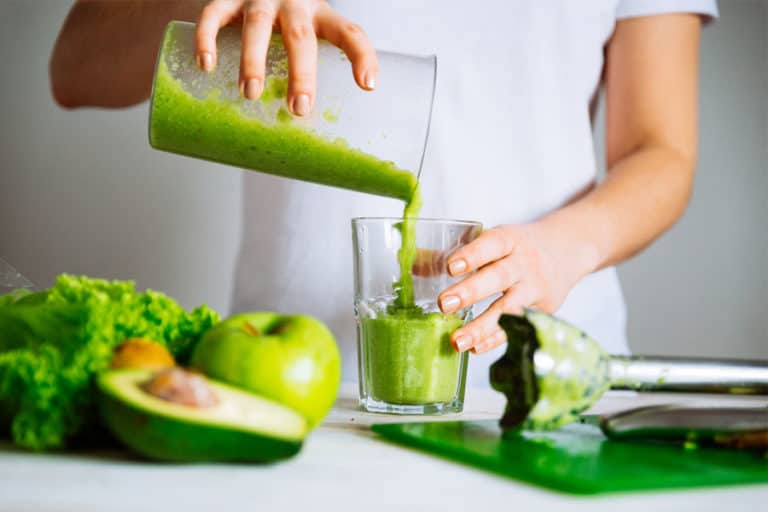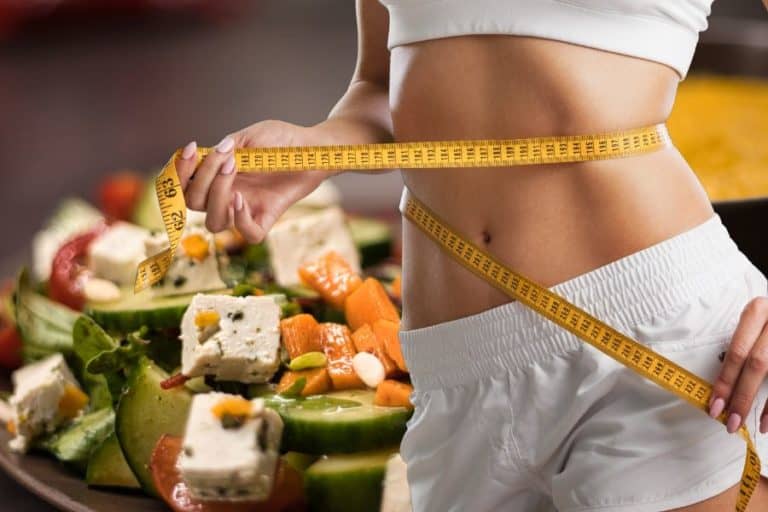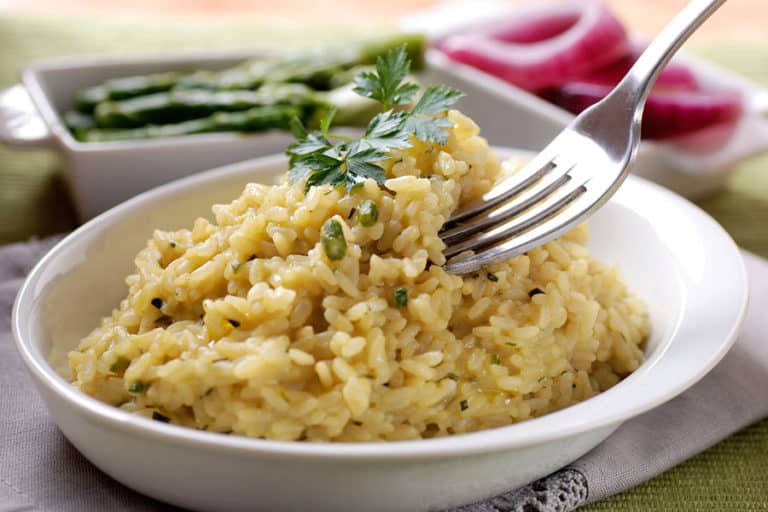Paleo Diet Food List- What to eat and avoid for weight loss

A diet from 2.5 million years ago? Well yes. That’s Paleo diet for you: An adaptation of the Paleolithic, hunter-forager human’s diet. Let’s see what’s in it for the evolved and sophisticated 21st-century dieters.
The Paleo diet is a modern adaptation of the food of our hunter-forager ancestors. But what exactly constitutes a paleo diet food list? And what is the scientific argument behind this seemingly wild diet format? Is it really that ‘wild’ a diet? Let’s unpack the logic and principles of this amazing diet to get a better understanding of its rules, benefits, and risks.
What is a paleo diet?
Paleolithic diet, or the Paleo diet as it is commonly known, is the modern-day interpretation of the dietary habits of Paleolithic humans. It is alternatively also called the Stone Age diet, or the Caveman Diet. In pure nutritional terms, the Paleo diet is a high-protein, high-fiber, and low-carb diet.
Let’s begin with what the Paleolithic in the Paleo diet means. It refers to the time between 2.5 million years ago up to around 12,000 years ago. Now the question: Why has this period been picked by dieters, and what sets it apart from the last 12000-odd years of human history?
An evolution flowchart:
| Human Evolution Stages | Developments |
| 5-7 million years ago | First human species walked on earth |
| 2-1.6 million years ago | Invention of fire/use of tools |
| 500,000-300,00 years ago | First instances of cooking |
| 65,000 years ago | Sea-faring |
| 40,000 years ago | Fishing |
| 12,000 years ago | Farming/domestication of animals |
No, this isn’t just about refined or unrefined, natural or unnatural foods. The history of refined and unnatural food consumption barely goes back a century or so. There is more to understand and unpack here.
Paleo diet food list – What is allowed for weight loss?
Now that you know that the Paleolithic period is the period of rapid inventions, and evolution, you can understand the paleo diet list of foods better. You know now that cooking is not just acceptable, it is in fact part of the Paleolithic human’s dietary habits.
Paleo differs from other protein-centric weight loss diets like the keto diet or Atkins in terms of the strict rules on sourcing your food. In the paleo diet you are only allowed to consume foods that became part of humankind’s diet after agriculture came into the picture.
These foods are naturally high in saturated fats and unhealthy sugars. Thus, eliminating these types of foods automatically promotes weight loss. This diet stresses the consumption of naturally sourced, pre-agricultural food categories. This leaves us with the following foods that one can consume without risking weight gain and other chronic health problems. Below is the list of paleo diet foods for weight loss:
- Game meats or Grass-fed meats
- All kinds of Fish/seafood
- Eggs and Poultry
- Fruits
- Fresh vegetables
- Roots and Tubers
- Mushrooms
- Seeds and nuts
- Natural fats and oils
- Herbs and spices (yes, there’s enough flavoring and seasoning options too.)
Put these ingredients together in tasty combinations and rustle up a delectable Paleo dinner. In fact, Paleolithic humans experimented with cooking styles such as stone-boiling(to heat liquids) and pit baking too. The scope for experimentation in Paleo cooking is immense.

A sample paleo diet meal plan
Based on the paleo-friendly foods mentioned above, we have created a one-week Paleo diet meal plan along with a daily Paleo diet grocery list to make your paleo journey easier. You can use this sample to create your own paleo diet shopping list as well.
Day 1 – Monday
- Breakfast – Scrambled Eggs with Smoked Salmon+One fruit
- Lunch – Chicken Salad with Olive Oil+Mix of nuts
- Dinner – Ground Beef and Vegetables Stir Fry+Mixed berries
Paleo Diet Grocery List for Day 1 – Eggs, Salmon, Coconut milk, Chives, Fruit (of your choice), Chicken, Olive Oil, Nuts, Ground Beef, Vegetables (of your choice), Salt, Pepper, Mixed Berries.
Day 2 – Tuesday
- Breakfast – Paleo Apple Cinnamon Pancakes+One boiled egg
- Lunch – Sandwich in a lettuce leaf, with meat and fresh vegetables
- Dinner – Roasted chicken thighs and veggies
Paleo Diet Grocery List for Day 2 – Eggs, Chicken, Vegetables (of your choice), Salt, Pepper, Almond/Coconut/Tapioca flour, Iceberg lettuce, Apple sauce, Honey, Olive Oil, Clarified butter, Cinnamon powder.
Day 3 – Wednesday
- Breakfast – Two poached eggs with spinach and mushrooms
- Lunch – Paleo Kung Pao Shrimp
- Dinner – Paleo Minestrone Soup
Paleo Diet Grocery List for Day 3 – Eggs, Shrimp, Spinach, Mushroom, Ground Pork Sausage, Vinegar, Tapioca starch, Olive Oil, Yellow Sweet Potato, Carrots, Celery Stalks, Zucchini Squash, Garlic, Chicken or Vegetable Broth, Tomatoes, Spinach, Bay Leaves, Dried Oregano, Dried Basil, Dried Parsley, Cayenne Pepper, Sea Salt.
Day 4 – Thursday
- Breakfast – Carrot Apple Smoothie Recipe (Paleo & Dairy-Free)+One boiled egg
- Lunch – Thai Inspired Coconut Chicken Curry & Cauliflower Rice
- Dinner – Paleo Ground Meat Stuffed Peppers
Paleo Diet Grocery List for Day 4 – Eggs, Carrot, Apple, Coconut milk, Cinnamon, Nutmeg, Coconut oil, Olive Oil, Garlic, Onion, Chicken breast, Bell peppers, Tomatoes, Coconut milk, Almond milk or cashew milk, Red curry paste, Fish sauce, Cauliflower, Turmeric, Cayenne, Cilantro, Onion, Ground Beef, Ground Cumin, Smoked Paprika, Parsley, Salt, Pepper, Jalapenos, Black Olives.
Day 5 – Friday
- Breakfast – Bacon and eggs, with a piece of fruit
- Lunch – Paleo Sauteed Shrimp with Cauliflower Rice
- Dinner – Pan-fried Chicken Tenders with Honey Mustard Dip
Paleo Diet Grocery List for Day 5 – Eggs, Bacon, Fruits of your choice, Almond Flour, Olive oil, Carrots, Onions, Cauliflower rice, Soy sauce, Honey mustard dip, Lemon, Cayenne pepper, Garlic powder, Salt, and Pepper.
Day 6 – Saturday
- Breakfast – Coconut milk, mixed berries, and spinach smoothie
- Lunch – Salmon Stir Fry with Vegetables
- Dinner – Slow-cooked beef stew with mixed vegetables
Paleo Diet Grocery List for Day 6 – Coconut milk, Mixed berries, Ground beef, Salmon, Vegetables of your choice, Spinach, Carrots, Onion, Garlic, Parsley. Tomato paste, Beef broth, Peas, Arrowroot flour, Salt, and Pepper.
Day 7 – Sunday
- Breakfast – Bacon Aubergine Quiche (Dairy-Free)
- Lunch – Paleo Orange Chicken with Cauliflower Rice
- Dinner – Roast chicken with a stuffing of onions, carrots, and rosemary
Paleo Diet Grocery List for Day 7 – Almond Flour, Potato Starch, Tapioca Starch, Maple Sugar, Egg, Carrots, Onion, Garlic, Aubergine, Uncured Bacon, Almond Milk, Yeast, Chicken, Arrowroot starch, Oranges, Vinegar, Fish sauce, Honey, Ginger, Olive oil, Rosemary, Salt, Pepper.
Downloadable 7 day paleo diet meal plan PDF
Click on the link below to download a printable PDF version of the Paleo diet meal plan and grocery list that we have provided above. Print this document out and plan your next week’s Paleo meals, or carry it with you when you go grocery shopping for the same.
List of foods not to eat on a paleo diet for weight loss
As mentioned earlier, the foods that aren’t Paleo-kosher are the ones that were largely the products of the pastoral-agricultural lifestyle. While this theory [1]Wikipedia: Sapiens: A Brief History of Humankind is much debated, there has been an observation that our bodies haven’t exactly adjusted to the post-agricultural diet and lifestyle. Agriculture brought about too many rapid changes in food, lifestyle, and consequently the health of people.
It is believed that the changes brought about by the neolithic, pastoral lifestyle fast outpaced the human body’s capacity to evolve. This is behind many of the health issues that developed in the human body and continue to plague us.
Keeping with the naturally sourced, pre-agricultural, high-protein, and high-fiber rule, here is a modern paleo diet food list that isn’t allowed:
- Cereal and grains
- Refined or artificial Sugars
- Processed foods
- Refined oils
- Dairy
- Potatoes (because of its higher glycemic index, though other tubers are allowed)
- Processed/Refined/Junk food
Does a Paleo diet provide essential nutrition?
Studies have shown great short-term health benefits among people who followed the Paleolithic diet. The short duration studies (6 months) have shown weight loss, reduction in waist size, lower blood pressure, improvement in cholesterol levels, and enhanced insulin sensitivity among the participants. Here is an overview of the nutritional benefits and risks of a Paleo diet:
Health and Nutritional Benefits:
Paleo diet has been shown to promote healthy weight loss in people who follow it. One long-term randomized controlled trial [2]HARVARD T.H. CHAN: Diet Review: Paleo Diet for Weight Loss conducted on Swedish women over 2 years has confirmed the above results. The women were randomly assigned to either a Paleo-diet group or a Nordic Nutrition Recommendation(NNR) diet group. The health impacts of both were studied over a period of 24 months. The study showed a significant decrease in fat mass and waist circumference in both groups, but the paleo group showed greater results during the first 6 months.
This brings us to an important point to consider while deciding to start the Paleo diet. The diet provides some indisputable benefits, but like many other diet and workout regimes, it tends to hit a plateau after a while.
Beyond that, the Paleo diet provides a fair number of healthy nutrients. The diet is primarily comprised of vegetables, fruits, nuts, and lean meats. These are a great source of healthy nutrients, rich in fiber and low in carbohydrates. This makes it easier to keep away those hunger pangs that are one of the culprits behind binge-eating and weight gain.
Moreover, eliminating grains and legumes automatically reduces the supply of the unwanted anti-nutrients. Anti-nutrients are compounds that bind themselves to vitamins and minerals, making their absorption difficult. Grains are notoriously rich in anti-nutrients [3]National Library of Medicine: Is There Such a Thing as “Anti-Nutrients”? A Narrative Review of Perceived Problematic Plant Compounds like phytates.
Health and Nutritional risks
Paleo isn’t all benefits and no risks. Diets often make us cut out complete food groups from our regular consumption. The Paleo diet is no exception to this. While every elimination seemingly has a nutritional explanation, it can prove bad in the long run. The undeniable benefits of the Paleo diet come with a set of obvious risks as well.
Firstly, it is important to remember that not all things natural are completely healthy or risk-free. Some of the world’s worst viruses like SARS, COVID, and HIV were contracted from naturally sourced meats.
Modern foods are often fortified with nutrients that they lack in their natural forms. Naturally sourced foods are automatically nutritionally deficient in these.
Food groups like grains, legumes, and dairy products are also rich in valuable nutrients. Pickled foods that are usually high in oil and sodium are a rich source of probiotics. The body stands to benefit from the consumption of these foods (in moderate quantities).
Elimination of dairy, sugars, and salts, and the complete elimination of pro-biotic-rich foods like yogurt and pickled food can wreak havoc on many systems in the body.
Many of you might have a difficult time dealing with the fact that all forms of alcohol are off-limits. After all, alcohol is produced by fermenting fruits with a lot of sugar.
The Paleo diet has often been criticized for the inclusion of red meats which are generally considered bad for cardiovascular health.
Here is a table representing the benefits and risks of going on a Paleo diet:
| BENEFITS/PROS | RISKS/CONS |
| Promotes Weight Loss | Has fewer micronutrients |
| Improves insulin sensitivity | No long term benefits |
| Lowers cholesterol | Increases risk of cardiovascular diseases due to red meats |
| Decreases blood pressure | Sourcing paleo diet foods can be difficult |
| Helps with better hunger management | Difficult to plan nutritionally balanced meals |
| Reduces consumption of anti-nutrients | Naturally sourced foods are expensive |
| Reduces Acne | Carries the risk of infections due to free-range meats. |
Paleo vitamins and supplements
An effective way around the possible health risks of the Paleo diet is the use of supplements. In theory, it is possible to supplement the missing nutrients from natural food sources. But, this is very difficult, impractical, and oftentimes very expensive when you sit down to plan your daily Paleo meals.
Take vitamin K2 or the mineral Magnesium for example. Given that farm-bred chickens are out of the question, you may have to consume large amounts of pastured egg yolks to meet your daily requirements of vitamin K2. Nuts are the best source of Magnesium. But it is difficult to eat enough nuts to meet our daily magnesium requirements without risking an overload of polyunsaturated fats.
Daily supplements can provide you with just the right amount of the required nutrients if you consume them after proper medical guidance and consultation. If you are on the Paleo diet consider including Lacto supplements, some form of Multivitamins, and mineral supplements for Calcium, Magnesium, Selenium, Sodium, and Iodine. Some might also need fiber supplements to make up for the loss of fiber from whole grains and legumes.
Conclusion
The Paleolithic diet has its share of supporters and detractors, and its share of pros and cons. Like every other diet, this one too needs to be taken with a pinch of salt (unrefined of course). Make sure that if you start a paleo diet you do it with considerable pre-diet preparation.
This includes a complete health check to ascertain pre-existing health conditions. Follow that up with consultations with your trusted doctors and nutritionists. That’s not the end of your prep.
You need to sit down and work out a plan for what foods out of the paleo diet food list you will be consuming, how you can combine them to give yourself enough nutrients every day, and most importantly how you will source these foods.
Not all Paleo foods are easy to come by. Indeed, some might even be heavy on the pockets. Once you are ready, go ahead and rustle up some exciting and healthy paleo meals. You will surely feel the rush of energy and the glow of good health on you.
FAQs
The food lists, nutritional parameters and other basics of the paleo diet can be a little vague. Therefore, we’ve compiled a list of frequently asked questions to help you make informed choices about the paleo diet.
What Do You Eat On A Paleo Diet?
The Paleo diet is basically a return to the way our ancestors ate before the advent of agriculture. This means eating primarily meat, fish, vegetables, fruits, nuts, and seeds.
Why Paleo Diet Is Unhealthy?
There is no single answer to this question. Some people believe that the paleo diet is unhealthy because it cuts out entire food groups, including grains, legumes, and dairy. Others believe that the paleo diet is unhealthy because it promotes the excessive consumption of red meat, which has been linked to health problems like heart disease and cancer.
Are Potatoes Paleo?
This is one of the grey zones of the Paleo diet, like dairy. Some people say that potatoes are paleo, while others say they are not. This is because potatoes are starchy vegetables. If you choose to eat potatoes, make sure they are unprocessed and cooked in healthy fats, such as olive oil or coconut oil.
Can You Drink Alcohol On Paleo?
Yes, you can drink alcohol on Paleo, but you need to be careful about the type of alcohol you consume. Avoid sugary, processed alcoholic drinks and opt for wine, beer, or liquor made with natural ingredients.
Are Bananas On The Paleo Diet?
Bananas are a controversial food in the paleo community. Some people believe that they are paleo, while others believe that they are not. Bananas are high in sugar and carbs. Such foods are not typically part of the paleo diet. However, they are also a good source of fiber, vitamins, and minerals. If you choose to eat bananas, make sure to balance them with other paleo-friendly foods.
Is Paleo Good For Weight Loss?
Some people believe that the paleo diet is good for weight loss because it cuts out processed foods and encourages the consumption of whole, unprocessed foods. Others believe that the paleo diet is not good for weight loss because it is very high in calories and fat.
References
| ↑1 | Wikipedia: Sapiens: A Brief History of Humankind |
|---|---|
| ↑2 | HARVARD T.H. CHAN: Diet Review: Paleo Diet for Weight Loss |
| ↑3 | National Library of Medicine: Is There Such a Thing as “Anti-Nutrients”? A Narrative Review of Perceived Problematic Plant Compounds |







